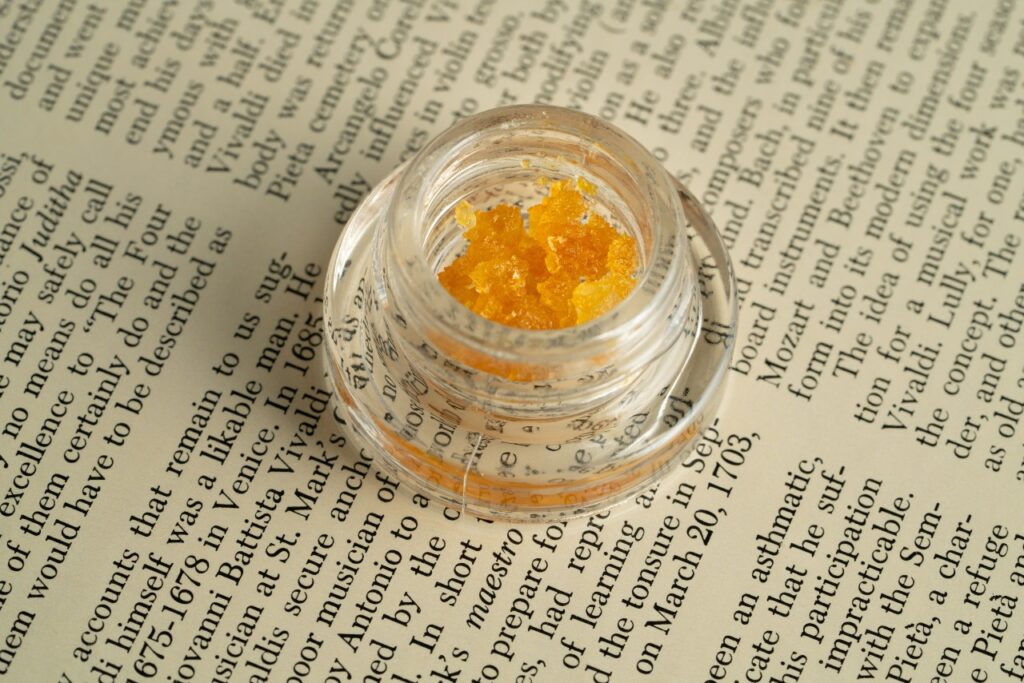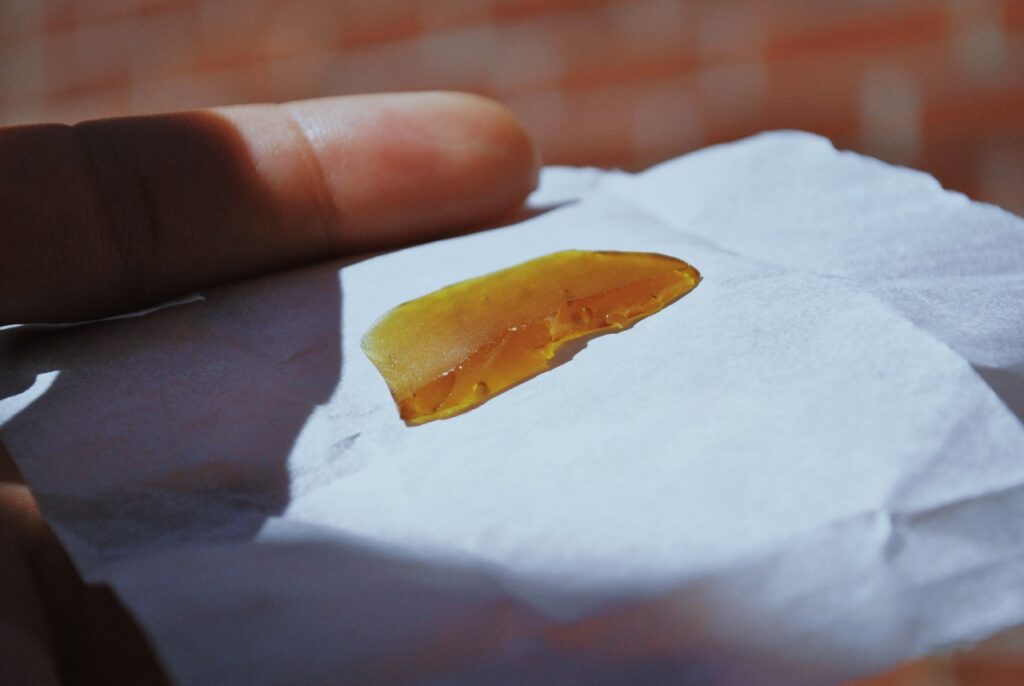
In the rapidly expanding cannabis industry, the extraction methods used to obtain concentrated cannabis products, such as rosin and resin, have gained significant popularity. Understanding the differences between live resin and live rosin becomes essential for industry professionals and enthusiasts alike, as both methods offer unique qualities, exceptional potency, and captivating flavors. So what is the difference between live resin and rosin?
Live resin is made from flash-frozen cannabis plants, preserving the terpene profile and resulting in a highly potent concentrate, while rosin is a solventless extract obtained through heat and pressure applied to dried and cured plant material, providing a clean and flavorful concentrate. Both rosin and resin offer distinct benefits and versatility in consumption methods, appealing to different preferences within the cannabis concentrate market. The choice between rosin and resin depends on individual preferences for extraction methods, flavor profiles, and desired effects, ultimately providing a wide range of options for cannabis enthusiasts.
What is Live Resin, Resin & Cured Resin?
So, what is live resin? Live resin, resin, and cured resin are three distinct types of cannabis concentrates, each with its own unique properties and extraction methods.

Live Resin
Live resin is a type of cannabis extract that is made from freshly harvested, flash-frozen cannabis plants. This method of extraction preserves the plant’s terpene profile, resulting in a powerful concentrate that captures the aromatic as well as the flavorful characteristics of the plant. This extraction process usually involves using solvents like butane or propane to dissolve the trichomes from the plant material, followed by a process to remove the solvent, leaving behind the highly potent concentrate. Live resin is well known for its rich flavors, its high terpene content, and its strong psychoactive effects. It is used for dabbing or vaporizing.
Resin
Resin refers to a cannabis concentrate that is obtained through a more traditional extraction process. The plant material is typically dried and cured before extraction, which results in a concentrate with a different terpene profile when compared to live resin. Resin extraction can involve various solvents, like butane, ethanol, or CO2, depending on the desired end product. Resin concentrates are generally less aromatic and flavorful than live resin, but they still offer potent effects. They are commonly used in vaporizers, edibles, or for mixing with flower in joints or bowls.
Cured Resin
Cured resin, which can also be referred to as cured live resin, is produced by extracting cannabinoids and terpenes from dried and cured cannabis flower. This process allows for a longer curing time, enhancing the development of flavors and aromas in the concentrate. Cured resin shares similarities with both live resin and resin, combining the potency of resin with some of the flavorful characteristics of live resin. Also used for dabbing, in vapes, in edibles, or mixed with cannabis flower.
Scientific studies on live resin, resin, and cured resin are limited, but anecdotal evidence suggests that live resin contains higher levels of terpenes compared to resin and cured resin. Live resin captures the essence of freshly harvested cannabis, resin is a more traditional concentrate extracted from dried and cured flower, and cured resin strikes a *chef’s kiss* balance between the two. Choosing between these concentrates ultimately depends on personal preferences, desired effects, and intended use.
Is Live Resin Dangerous?
Live resin is generally considered safe when produced and consumed responsibly. The extraction process used to create live resin involves solvents like butane or propane, which may raise concerns about safety. However, when conducted by licensed and reputable producers, the process can be carefully controlled to minimize risks.
Live resin offers unique therapeutic benefits due to its high terpene content, which may enhance the entourage effect—the synergistic interaction between cannabinoids and terpenes. This can potentially provide more targeted relief for medical cannabis patients. Moreover, live resin allows for the preservation of the cannabis plant’s natural profile, maximizing the potential therapeutic properties of the cannabis strain being used.
As with any concentrated cannabis product, responsible consumption is key. Patients should start with low doses, gradually increasing as needed and under the guidance of a healthcare professional. Obtaining live resin from legal and regulated sources ensures that it has undergone proper testing, guaranteeing quality and safety for medical cannabis patients.
What is Live Rosin, Rosin & Hash Rosin?
Live rosin, rosin, and hash rosin are three distinct types of cannabis concentrates, each obtained through different processes.

Live Rosin
Live rosin is a cannabis extract made from freshly harvested and flash-frozen plant material. It involves a solventless extraction method that utilizes heat and pressure to extract the resinous trichomes from the plant material, resulting in a highly concentrated and potent product. Live rosin preserves the terpene profile of the original plant, offering robust flavors and aromas that are characteristic of the specific strain used. It is known for its high terpene content and the preservation of the plant’s natural properties.
Rosin
Rosin, however, is a cannabis concentrate that is obtained through heat and pressure applied to dried and cured plant material, such as flower or sifted kief. This process involves pressing the material between heated plates, which causes the resin to melt and be squeezed out. The resulting rosin is then collected and can be further processed or used in its natural form. Rosin extraction is a solventless method that has gained popularity due to its simplicity and the ability to produce a clean and flavorful concentrate.
Hash Rosin

To obtain hash rosin, the starting material is typically first sifted or mechanically separated to isolate the trichome heads, which contain the desired cannabinoids and terpenes. These trichome heads are then subjected to heat and pressure, usually through a process called rosin pressing. This can be done using specialized equipment such as a rosin press or manually using heated plates and pressure. The application of heat and pressure causes the trichome heads to melt and release their resin, which is then collected and further processed to remove any impurities.
The main differences between live rosin, rosin, and hash rosin lie in the starting material and the extraction process. Live rosin is made from freshly harvested and flash-frozen plant material, preserving its terpene profile. Rosin is produced by applying heat and pressure to dried and cured plant material. Hash rosin involves extracting trichomes from dried and cured cannabis flower or hashish using heat and pressure, without solvents, typically after the starting material has been sifted or mechanically separated.
Extract Comparison of Resin vs Rosin
What is the difference between resin and rosin?
Resin is typically extracted using solvents like butane, ethanol, or CO2. This involves dissolving the trichomes from dried and cured cannabis flower, resulting in a concentrated resin product. On the other hand, rosin is obtained through a solventless extraction process by applying heat and pressure to dried and cured plant material. The absence of solvents in rosin extraction is appealing to those seeking a more natural and chemical-free concentrate.
Both resin and rosin can yield high-quality concentrates, but there are some key differences. Resin extraction methods can often involve more extensive processing, which can potentially impact the overall quality of the final product. In contrast, rosin extraction is considered to preserve the natural profile of the starting material, leading to a concentrate that closely resembles the original plant.
Resin concentrates may exhibit a slightly different flavor and aroma compared to the original plant due to the extraction process and potential loss of volatile compounds. On the other hand, rosin is known for its ability to retain the natural flavor and aroma profile of the starting material, resulting in a more authentic and robust experience. Rosin extraction is also believed to maintain a higher terpene content, providing a more complete representation of the strain’s characteristics.
Resin concentrates are known for their high potency, typically containing elevated levels of cannabinoids. The consistency of resin can vary depending on factors such as the extraction method and post-processing techniques employed. Rosin generally maintains a uniform texture, often displaying a stable and manageable consistency. In terms of versatility, both resin and rosin can be used in various consumption methods, including dabbing, vaporizing, or incorporating into edibles.

Resin and rosin offer distinct characteristics and appeal to different preferences within the cannabis concentrate market. Resin extraction relies on solvents, potentially impacting the overall product quality, while rosin extraction is solventless and revered for its preservation of natural flavors and aromas. Rosin also tends to maintain a higher terpene content. Resin concentrates often boast high potency, but consistency can vary. Both resin and rosin are versatile in consumption methods. Ultimately, the choice between resin and rosin is all yours, and depends on individual preferences for extraction methods, flavor profiles, and desired effects.
| Cannabis Extracts | Live Resin | Live Rosin |
| Extraction method | Solvent-based | Solventless |
| Potency | High | High |
| Terpene Profile | Rich | Slightly Altered |
| Average Price | $ | $$ |
Resin & Live Resin Benefits
Both resin and live resin offer unique benefits as cannabis extraction products.
Resin, extracted using solvents like butane or CO2, provides a concentrated form of cannabis that is known for its potency. It contains high levels of cannabinoids, making it appealing for those seeking strong effects. Resin is versatile and can be used in various consumption methods such as dabbing or vaporizing. It offers a potent and efficient way to consume cannabis.
Live resin, on the other hand, stands out for its preservation of fresh cannabis terpenes and flavors. Made from freshly harvested and flash-frozen plant material, live resin retains the volatile terpenes that give cannabis its unique aromas and flavors. This results in a more authentic and robust sensory experience compared to other extraction methods. The preservation of terpenes in live resin allows consumers to enjoy the full spectrum of flavors and aromas that the original strain offers.
Both resin and live resin have the potential to enhance the entourage effect. The entourage effect refers to the synergistic interaction between cannabinoids, terpenes, and other compounds in cannabis. By capturing and preserving the full range of terpenes, live resin and resin enable a more comprehensive entourage effect. This interplay between cannabinoids and terpenes is believed to enhance the therapeutic potential of cannabis, potentially leading to more nuanced and targeted effects compared to isolated compounds.
In summary, resin is valued for its potency and versatility, providing a concentrated form of cannabis. Live resin, on the other hand, shines in its preservation of fresh terpenes and flavors, offering an authentic and robust sensory experience. Both resin and live resin have the potential to enhance the entourage effect, maximizing the synergistic benefits of cannabinoids and terpenes. These unique benefits make resin and live resin attractive options for cannabis enthusiasts seeking potent effects, flavorful experiences, and potentially enhanced therapeutic benefits.
Rosin & Live Rosin Benefits
Rosin and live rosin are highly regarded as solventless extraction options in the cannabis industry, offering several advantages over solvent-based extraction methods.
One significant advantage of rosin and live rosin is their purity. Since they are produced without the use of solvents, there is no risk of residual solvents in the final product. This appeals to consumers who prioritize a clean and natural cannabis experience. The absence of solvents also means that rosin and live rosin can be considered more environmentally friendly compared to solvent-based extractions.
Additionally, rosin and live rosin have the potential to contain a full spectrum of cannabinoids. The extraction process preserves the natural profile of the starting material, allowing for the retention of a wide range of cannabinoids, including THC, CBD, and various minor cannabinoids. This full-spectrum cannabinoid content contributes to the entourage effect, where the compounds work synergistically to enhance the therapeutic potential of the product.
These extracts are also very versatile and can be used in various consumption methods, providing flexibility for users. They can be dabbed using a dab rig, vaporized in a concentrate vaporizer, or even added to edibles for an infused culinary experience. This versatility allows consumers to choose their preferred method of consumption based on personal preference and desired effects.
It’s important to note that the purity and full-spectrum cannabinoid content of rosin and live rosin can vary depending on the quality of the starting material and the extraction process. Factors such as the strain used, temperature, and pressure during extraction, and the expertise of the extractor can all influence the final product.
Overall, rosin and live rosin offer the advantages of being solventless, pure, and potentially containing a full spectrum of cannabinoids. Their versatility in consumption methods further enhances their appeal. As solventless extraction options, rosin and live rosin have gained popularity among cannabis enthusiasts seeking a natural, clean, and potent cannabis experience.
Type of Resin Products & Prices
Shatter: Shatter is a glass-like concentrate that is brittle and transparent. It typically ranges in price from $20 to $60 per gram, depending on the quality and brand.
Wax: Wax has a softer, crumbly texture and is known for its high potency. The average price for wax ranges from $25 to $50 per gram.
Budder: Budder has a creamy and buttery consistency, making it easy to work with. It is priced between $30 and $60 per gram.
Live Resin: Live resin is made from fresh, flash-frozen cannabis plant material, preserving the terpene profile. It is highly aromatic and flavorful. The average price for live resin varies from $40 to $80 per gram.
Sugar: Sugar is a concentrate with a crystallized texture, resembling sugar granules. It is priced between $30 and $60 per gram.
Sauce: Sauce is a concentrate that features high terpene content and a thick, viscous consistency. It is often accompanied by diamond-like crystals. The price for sauce ranges from $40 to $80 per gram.
It’s important to note that these average prices can vary. Additionally, pricing may fluctuate over time.
Type of Rosin Products & Prices
Traditional Rosin: Traditional rosin refers to the standard form of rosin produced through heat and pressure. It is commonly priced between $40 and $80 per gram, depending on factors such as strain, quality, and brand.
Live Rosin: Live rosin is made from freshly frozen cannabis plant material, preserving the terpene profile and resulting in a more flavorful product. Live rosin typically commands a higher price range, averaging between $60 and $100 per gram.
Full-Melt Rosin: Full-melt rosin is known for its high-quality and purity, capable of fully melting and leaving little to no residue. Due to its premium quality, full-melt rosin can range in price from $80 to $150 per gram.
Solventless Hash Rosin: Solventless hash rosin is made from hashish that has been extracted using ice water or dry sift methods, followed by the application of heat and pressure. It is highly sought after for its purity and potency. The average price for solventless hash rosin varies from $80 to $120 per gram.
It’s important to note that these prices are approximate averages and can vary. Prices can also be influenced by the rarity or exclusivity of certain strains or extraction techniques.
In conclusion, the cannabis industry has seen a surge in interest surrounding the extraction methods of rosin and resin in the pursuit of the best of the top-notch, high-quality concentrates. Rosin extraction and resin extraction have emerged as popular techniques, each with its own distinct characteristics and potency. As the demand for cannabis concentrates continues to grow, it becomes crucial for industry professionals and enthusiasts alike to grasp the nuances between rosin and resin. With a deeper understanding of these extraction techniques, we can all navigate the evolving concentrates landscape with the knowledge needed to make good choices about what cannabis products we choose to consume.
- Rosin vs Resin: The Differences You Need to Know - July 11, 2023
- Marijuana Hangovers | Causes, Symptoms & Prevention Methods - June 8, 2023
- 9 Proven Ways on How to Stop the Munchies | Tested Solutions - June 1, 2023
